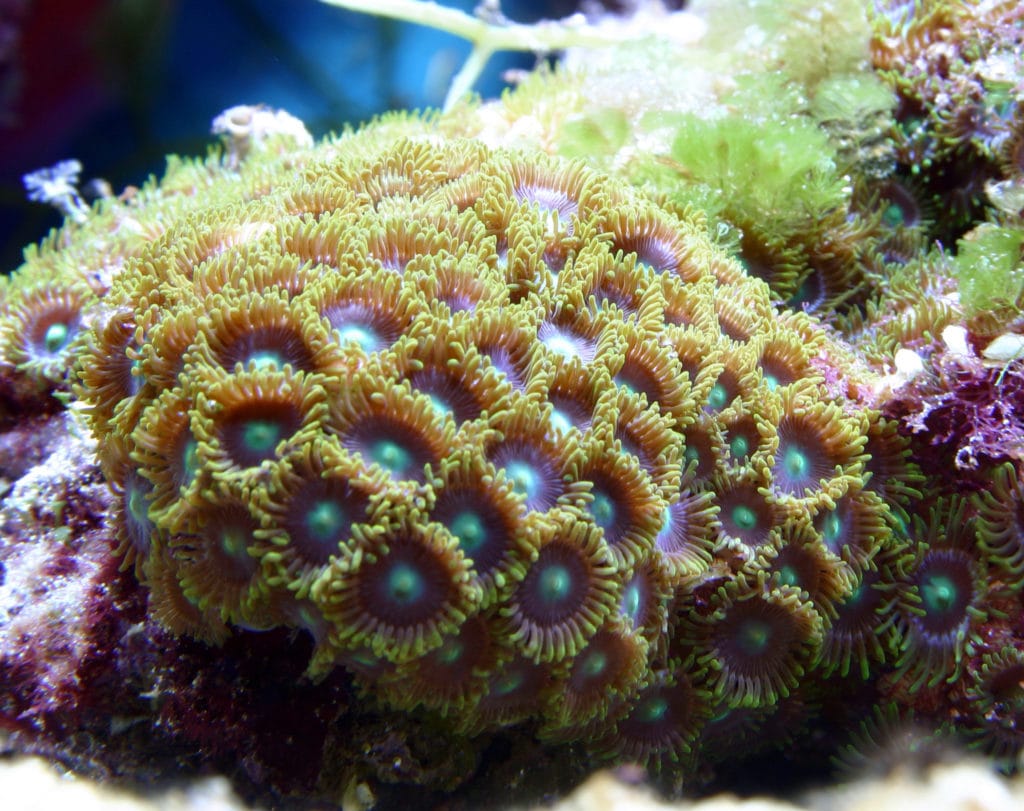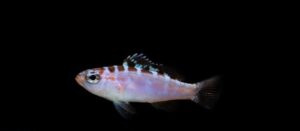Despite their lush appearance, natural coral reefs are extremely nutrient-poor environments. Not likely to be able to grow too much bad algae. Corals everywhere should be just fine with that, since it means less pressure to compete for space with benthic (that is, growing on the sea floor) microalgae. Planktonic microalgae, on the other hand, are predictably delivered to the reef from adjacent, comparatively fertile open ocean waters each day via the tides. These algae—the phytoplankton—can serve as an excellent nutritional supplement for corals and other filter-feeding reef dwellers. Until these incoming phytoplankton are captured and consumed by the hungry corals, they scavenge whatever nutrients they can from the infertile reef waters, effectively competing with the resident benthic algae that the corals so hate. Though there’s usually not much of it to be found over a characteristically crystal-clear reef, corals can really benefit from the stuff.
Greener on the Other Side
Things tend to be a little different in many marine aquaria. Most notably, they are not nutrient-poor. Indeed, a good number of hobbyists struggle endlessly to maintain low dissolved nutrient levels. This is due to a few common missteps. The big one is, of course, overstocking (e.g. adding too many animals). The close second is overfeeding. Sometimes nutrient build-ups stem from single poor decisions made early on (e.g. going cheap instead of investing in dependable filtration devices). Sometimes they simply stem from chronically poor husbandry practice (e.g. not carrying out enough water changes). Lots of factors lead to the steady accumulation of nitrate, phosphate and silicate. But the result is pretty much always the same: algae plagues.
The Natural Solution?
There are just about as many solutions for algal fouling than there are causes of it. Some of the remedies are themselves potentially destructive (algicides, for example) and should thusly be avoided. UV or ozone sterilization techniques are a little better but nevertheless have their own drawbacks; they are indiscriminate, killing all passing microbes, both good and bad. That, and they don’t even address the core issue: nutrient level imbalances.
[Phyto]
A growing number of hobbyists are coming to recognize the benefits of biocontrol. This involves using certain types of organisms to control or eliminate other types of organisms. These creatures might exert their influence through a few different kinds of actions. This might include herbivory, where certain invertebrates (e.g. snails) are added for the primary purpose of consuming nuisance algae.
It might also include adding benevolent types of algae that compete with the bad. One example of this is the use of macroalgae in planted refugia. In theory, the macros steal nutrients from other, less desirable forms. The same sort of fierce nutrient competition can be established against undesirable algae with the use of live phytoplankton.
Good Algae vs Bad Algae
Some methods of benthic algae control just won’t cut it. For example, your trochus snails might avoid the dinoflagellates, which often produce noxious, bad-tasting compounds. In such a case you might be able to fight bad algae with a good algae.
This happens through two means. One is direct, while the other is rather indirect. The most direct way in which phyto competes with other algae is as described above—scrambling to mop up nutrients. This makes a lot of sense once one understands the concept of nutrient limitation. There is always some “limiting nutrient” for a plant’s continued growth. Limiting nutrients are generally in very short supply. Once that nutrient is depleted from the environment, all plant growth ceases, regardless of how abundant the other essential nutrients may be.
So, think of it this way. Suppose you have an issue with one of those nasty brown diatoms that form films over the tank panels. All diatoms require silicate to build their frustule (shell), right? Well, then maybe you could add a live phyto product that includes a planktonic diatom (e.g. Thalassiosira). So long as the lighting over your tank is bright enough to support photosynthesis, the phyto will live and grow and reproduce. As they do, they will sequester lots of silicate. Sure, the phyto will eventually (quickly!) be eaten by corals, clams, sponges and so on. That’s okay! As long as you stubbornly keep adding phyto, the silicate levels will drop to a point that the bad diatom can no longer survive!
One other, more indirect, way in which phyto can reduce nuisance algae is by promoting large copepod populations. Most copepods undergo a pelagic (that is, open water) larval stage. During this time, phytoplankton is the young animal’s chief food source. In fact, it is often phyto density that limits the number of pods that can live in a given aquarium system.
When a quality live product such as Poseidon’s Feast is generously provided, larval copepods thrive. This, eventually, means more adult copepods! In the case of harpacticoid copepods (e.g. Tisbe), adults live a benthic lifestyle. And what do adult harpacticoids eat while they’re crawling around on the glass and rock and sand? Benthic algae!
Go Green to Handle Bad Algae
Sure, there are many means of eliminating bad algae, including your own hands. However, relying on a natural method such as phyto dosing can be whole lot easier. Plus, your phytoplanktivorous filter-feeders will never be happier! Even more, because phyto boosts pod populations, your zooplanktivores will appreciate it just as much! With just a little splash of green now and again, your tank might be healthier and look considerably more vibrant than ever before.
[Phyto]






Scott Williamson says
I’ve been plagued with hair algae for months and months and months. I’m dosing the tank now with the published gradually increasing bi-daily doses of Oceanmagik . Today is one month and I’ve just moved into the highest dose (11 ml / 10 gal). I have been pulling clumps of algae off the rock easily today and noticed some rock has turned black with dead algae. Not sure how much to dose though after the algae is gone. This method works and my corals are feasting like pigs! Thx for the great solution !
Danny DJ says
Like the term algae vs algae, it’s logical I guess. Great article. Thank’s.
Angela Revell says
I have seen a difference
Eric says
Between H202 dosing, manually pulling, scraping, filter socks and p04 removers, I’m winning the battle against hair algae. I also increased the leds time on my chaeto reactor along with weekly water changes. Then it dawn on me after reading your article, I’ve also been dosing phytoplankton.
Larry M. says
Excellent article, spot on.
I have been dosing nanno/tetra Phyto for almost a year now, adding about 50ml daily to a 32 gallon tank. Results are nothing but impressive, keeping the GHA limited and under control. Side benefit, SPS corals love the Phyto dosing. I also keep excess Caulerpa in both the refugium and on one side of the display tank which along with the phyto dosing helps keep the nitrates and phosphates at very low, almost undetectable levels. I end up doing minimal water changes, around 20% every two to three months just to replace trace elements that may be used up by the plants and animals.